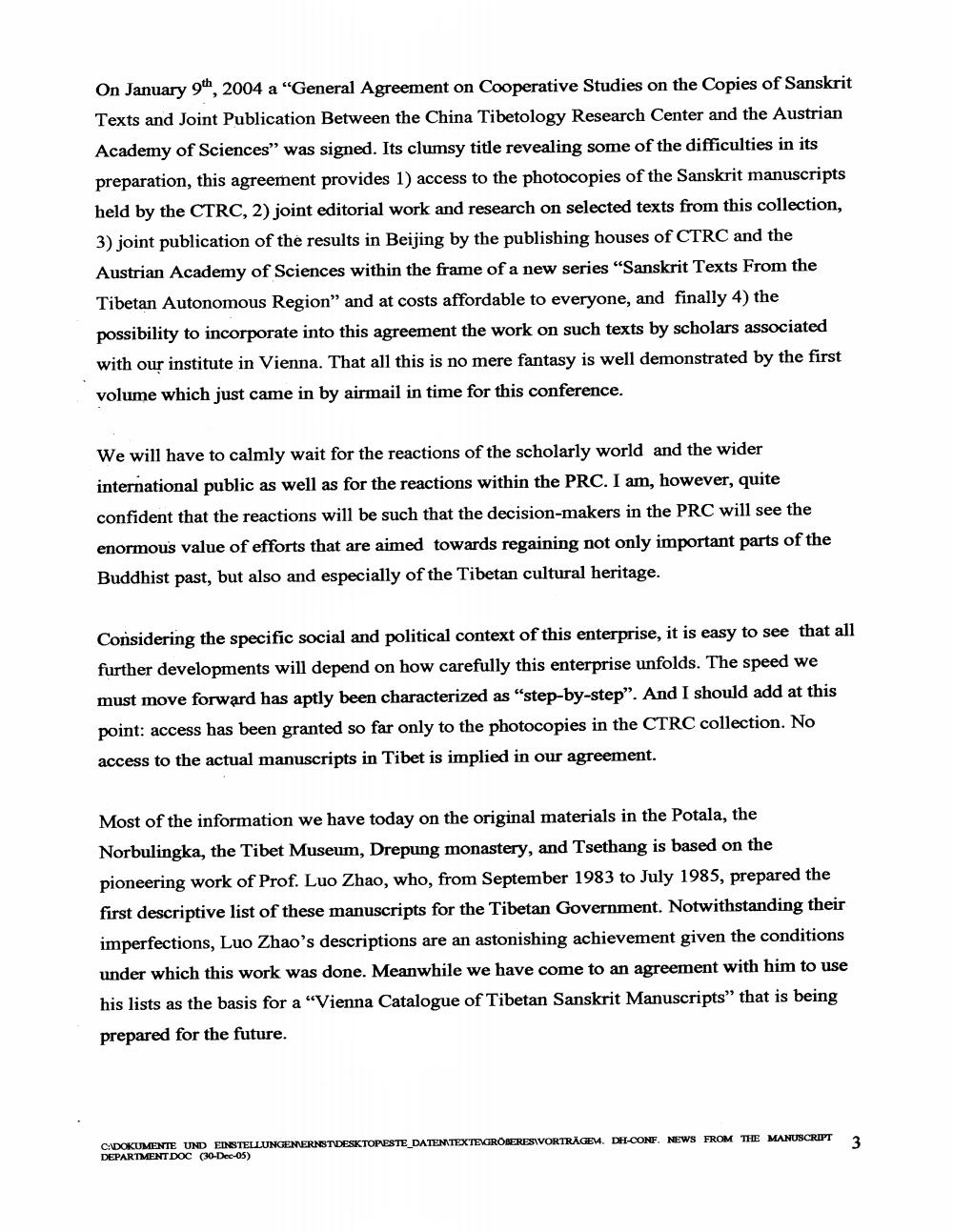________________
On January 9th, 2004 a "General Agreement on Cooperative Studies on the Copies of Sanskrit Texts and Joint Publication Between the China Tibetology Research Center and the Austrian Academy of Sciences” was signed. Its clumsy title revealing some of the difficulties in its preparation, this agreement provides 1) access to the photocopies of the Sanskrit manuscripts held by the CTRC, 2) joint editorial work and research on selected texts from this collection, 3) joint publication of the results in Beijing by the publishing houses of CTRC and the Austrian Academy of Sciences within the frame of a new series "Sanskrit Texts From the Tibetan Autonomous Region” and at costs affordable to everyone, and finally 4) the possibility to incorporate into this agreement the work on such texts by scholars associated with our institute in Vienna. That all this is no mere fantasy is well demonstrated by the first volume which just came in by airmail in time for this conference.
We will have to calmly wait for the reactions of the scholarly world and the wider international public as well as for the reactions within the PRC. I am, however, quite confident that the reactions will be such that the decision-makers in the PRC will see the enormous value of efforts that are aimed towards regaining not only important parts of the Buddhist past, but also and especially of the Tibetan cultural heritage.
Considering the specific social and political context of this enterprise, it is easy to see that all further developments will depend on how carefully this enterprise unfolds. The speed we must move forward has aptly been characterized as "step-by-step”. And I should add at this point: access has been granted so far only to the photocopies in the CTRC collection. No access to the actual manuscripts in Tibet is implied in our agreement.
Most of the information we have today on the original materials in the Potala, the Norbulingka, the Tibet Museum, Drepung monastery, and Tsethang is based on the pioneering work of Prof. Luo Zhao, who, from September 1983 to July 1985, prepared the first descriptive list of these manuscripts for the Tibetan Government. Notwithstanding their imperfections, Luo Zhao's descriptions are an astonishing achievement given the conditions under which this work was done. Meanwhile we have come to an agreement with him to use his lists as the basis for a “Vienna Catalogue of Tibetan Sanskrit Manuscripts" that is being prepared for the future.
C:\DOKUMENTE UND EINSTELLUNGEN ERNST DESKTOPESTE DATENTEXTEGH DEPARTMENT DOC (30-Dec-05)
NEWS FROM THE MANUSCRIPT
3




